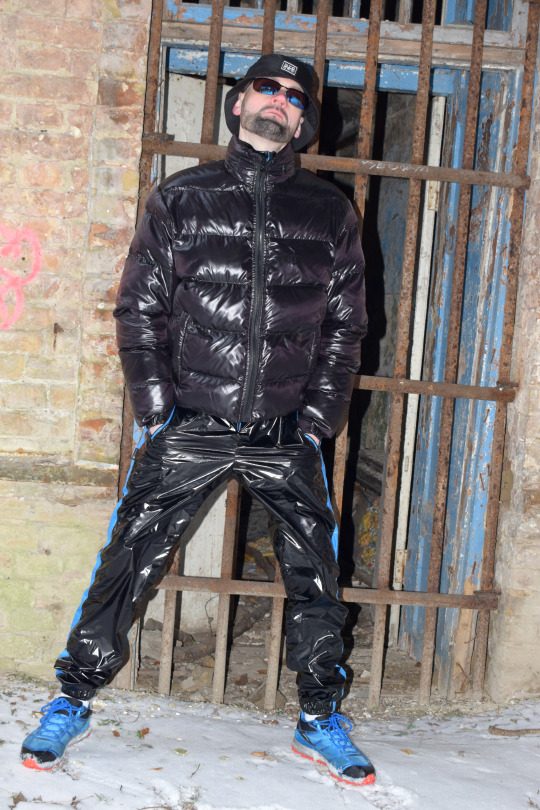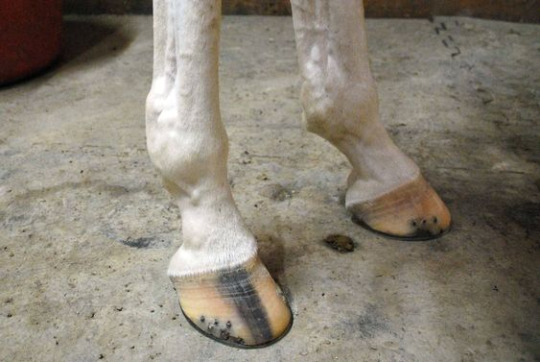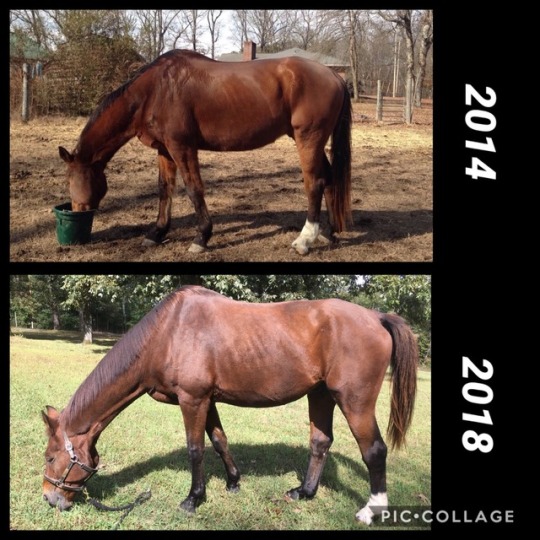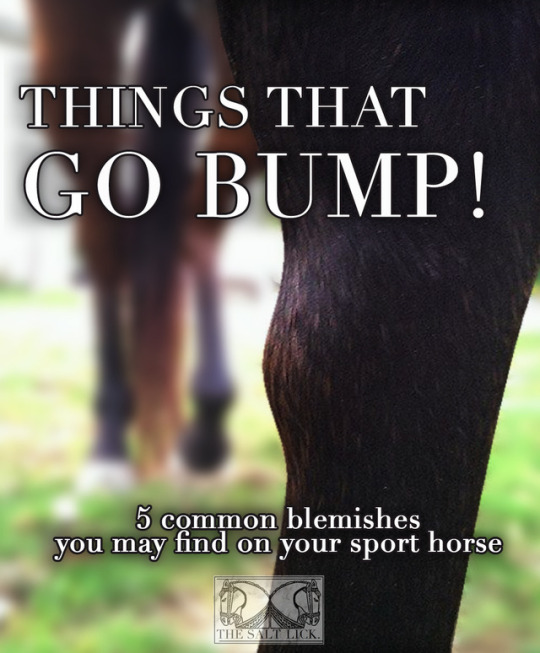#windpuffer
Photo

#windpants#windpuffer#pufferjacket#nylonjacket#rainjacket#razz#nike#nylonaddict#overall#coverall#bib#nylonpants#trainers#adidas#scally#proll#razzgear#urbansports#fitlad#kiffeur#nylonfashion
111 notes
·
View notes
Text
Inversnaid
Gerard Manley Hopkins
This darksome burn, horseback brown,
His rollrock highroad roaring down,
In coop and in comb the fleece of his foam
Flutes and low to the lake falls home.
A windpuff-bonnet of fawn-froth
Turns and twindles over the broth
Of a pool so pitchblack, fell-frowning,
It rounds and rounds Despair to drowning.
Degged with dew, dappled with dew,
Are the groins of the braes that the brook treads through,
Wiry heathpacks, flitches of fern,
And the beadbonny ash that sits over the burn.
What would the world be, once bereft
Of wet and wildness? Let them be left,
O let them be left, wildness and wet;
Long live the weeds and the wilderness yet.
#poetry#gerard manley hopkins#this is what sparked the last post#(along with several other poems i've read lately but this was the final piece in the tower)#i opened the anthology and started casually reading it aloud to myself#only to find myself nearly laughing with delight as the rhythm took hold in the first stanza#speeding me along much faster than intended#tumbling over letters like stones in a brook#ROLLrock HIGHroad ROARing down#i was finding myself wanting to add syllables later on to keep the rollicking rhythm going#and then going back to appreciate the rhythm that was already there#'long live the weeds and the wilderness yet' needs to be on a poster or a sampler or notebook or something that i own
16 notes
·
View notes
Text
A poem by Gerard Manley Hopkins

Inversnaid
This darksome burn, horseback brown,
His rollrock highroad roaring down,
In coop and in comb the fleece of his foam
Flutes and low to the lake falls home.
A windpuff-bonnet of fáwn-fróth
Turns and twindles over the broth
Of a pool so pitchblack, féll-frówning,
It rounds and rounds Despair to drowning.
Degged with dew, dappled with dew
Are the groins of the braes that the brook treads through,
Wiry heathpacks, flitches of fern,
And the beadbonny ash that sits over the burn.
What would the world be, once bereft
Of wet and of wildness? Let them be left,
O let them be left, wildness and wet;
Long live the weeds and the wilderness yet.

Gerard Manley Hopkins
(1844-1889)
Photo of Inversnaid Waterfall by @Alan Weir
2 notes
·
View notes
Text
(27/75) Inversnaid - Gerard Manley Hopkins
This darksome burn, horseback brown,
His rollrock highroad roaring down,
In coop and in comb the fleece of his foam
Flutes and low to the lake falls home.
A windpuff-bonnet of fáwn-fróth
Turns and twindles over the broth
Of a pool so pitchblack, féll-frówning,
It rounds and rounds Despair to drowning.
Degged with dew, dappled with dew,
Are the groins of the braes that the brook treads through,
Wiry heathpacks, flitches of fern,
And the beadbonny ash that sits over the burn.
What would the world be, once bereft
Of wet and of wildness? Let them be left,
O let them be left, wildness and wet;
Long live the weeds and the wilderness yet.
#ttpd poetry party#I'm going to post a poem a day until ttpd comes out#let's see if I can keep this going#send me poetry recommendations swiffers
0 notes
Quote
Windpuffs: Resolvendo um inchaço comum em cavalos
19 de maio de 2021
Postado por Jean-Yin Tan, DVM, Dipl. ACVIM
Que medidas de prevenção posso tomar para o inchaço da perna traseira do meu cavalo após o exercício?
Windpuffs: Resolvendo um inchaço comum em cavalos – O cavalo

0 notes
Photo

Inversnaid
This darksome burn, horseback brown,
His rollrock highroad roaring down,
In coop and in comb the fleece of his foam
Flutes and low to the lake falls home.
A windpuff-bonnet of fáwn-fróth
Turns and twindles over the broth
Of a pool so pitchblack, féll-frówning,
It rounds and rounds Despair to drowning.
Degged with dew, dappled with dew
Are the groins of the braes that the brook treads through,
Wiry heathpacks, flitches of fern,
And the beadbonny ash that sits over the burn.
What would the world be, once bereft
Of wet and of wildness? Let them be left,
O let them be left, wildness and wet;
Long live the weeds and the wilderness yet.
Gerard Manley Hopkins
31 notes
·
View notes
Text

Let’s talk about Degenerative Suspensory Ligament Desmitis (DSLD).
DSLD is a systemic disease that is not unlike Ehlers-Danlos syndrome in humans, in that it affects the connective tissues. The most obvious sign is exactly as the name suggests: degeneration of the suspensory ligaments without history of injury or trauma, which usually results in dropped fetlocks. When the fetlocks drop, other joint structures in the legs straighten, giving a “post-legged” appearance. The effect is most obvious when weight is placed on the limb.
Other symptoms include, but are not limited to:
Recurring, unexplained lameness which may appear in different legs
Stumbling or tripping
Heat and swelling of the fetlocks
Thickening or hardening of the fetlocks
Windpuffs
Lying down frequently, reluctance to get up
“Dog-sitting”
Sitting against walls or fences for relief
Soreness in the back or pelvis
Loosening of the skin
Loss of weight and muscle tone
Reluctance to canter
Sour or depressed disposition
Increased sensitivity to touch
There isn’t a lot of research on DSLD. For the longest time, veterinarians and horse owners treated the dropped fetlocks as a fairly normal sign of aging. It wasn’t until an unusually large number of Paso Finos began showing signs of early breakdown that researchers began looking for a cause. In 2006, scientists discovered that the tissues of affected horses were undergoing abnormal repair in response to normal activity. Instead of producing more collagen to repair the “microtraumas” of everyday life, an excessive amount of prosteoglycan results in the creation of cartilage-like fibers which lack elasticity and break down more quickly over time. Researchers at the University of Georgia performed autopsies on affected horses and discovered the systemic nature of the disease. Abnormal fibers were found in the connective tissues of several major organs and other structures, including the eyes, lungs, heart, and nuchal ligament.
Currently, there isn’t an effective way to screen for or diagnose DSLD. Scientists are fairly certain that there’s a hereditary component to the disease, but there are no known genetic markers that can be used to predict the onset of disease. We know that horses should not be bred, but the fact that most don’t start showing signs until they’re 10+ makes that easier said than done.
To add insult to injury, there is no treatment for DSLD at this time. Affected horses may be maintained in relative comfort for a few years, but euthanasia is virtually inevitable.
I’ve included pictures of my own DSLD-affected horse, Sam, for your reference. The top photo was taken on January 31, 2014, and the bottom was taken on September 29, 2018. In the last four or five years, it has become increasingly difficult to maintain his condition, despite a carefully structured program and close work with a nutritionist. Though his are not nearly as dramatic as some, you can see that his hind fetlocks have dropped considerably, especially when weight-bearing. He is also significantly less tolerant of curry combs, particularly over his hindquarters. He now shows significant thickening in the fetlocks, which I will photograph as soon as the weather permits.
In an effort to slow the progress of DSLD, I have completely retired my horse at the age of 20, with full awareness that he is lucky to have had a much longer, more successful career than many. My goal now is to maintain his comfort for as long as possible.
#omg lauren shut up#degenerative suspensory ligament desmitis#DSLD#ESPA#DSLD/ESPA#terminal illness#Samuel Adams#Trakehner#vet stuff
41 notes
·
View notes
Quote
This darksome burn, horseback brown,
His rollrock highroad roaring down,
In coop and in comb the fleece of his foam
Flutes and low to the lake falls home.
A windpuff-bonnet of fáwn-fróth
Turns and twindles over the broth
Of a pool so pitchblack, féll-frówning,
It rounds and rounds Despair to drowning.
Degged with dew, dappled with dew
Are the groins of the braes that the brook treads through,
Wiry heathpacks, flitches of fern,
And the beadbonny ash that sits over the burn.
What would the world be, once bereft
Of wet and of wildness? Let them be left,
O let them be left, wildness and wet;
Long live the weeds and the wilderness yet.
Gerard Manley Hopkins, Inversnaid
0 notes
Text
33. Inversnaid
THIS darksome burn, horseback brown,
His rollrock highroad roaring down,
In coop and in comb the fleece of his foam
Flutes and low to the lake falls home.
A windpuff-bonnet of fáwn-fróth 5
Turns and twindles over the broth
Of a pool so pitchblack, féll-frówning,
It rounds and rounds Despair to drowning.
Degged with dew, dappled with dew
Are the groins of the braes that the brook treads through, 10
Wiry heathpacks, flitches of fern,
And the beadbonny ash that sits over the burn.
What would the world be, once bereft
Of wet and of wildness? Let them be left,
O let them be left, wildness and wet; 15
Long live the weeds and the wilderness yet.
--Gerard Manley Hopkins
0 notes
Photo

10/10/2017
“Things that go bump! – 5 common blemishes you may find on your sport horse”
Author: Alana Kekel
Whether you’ve just gotten your new horse off the trailer or you’ve had him for twenty years, sometimes you just see odd little things that make you wonder, “what the heck is that!?” Here’s some of the most common things that go bump- on your horse! ***
Pin Firing:
Have you ever looked at your horse’s legs and found an odd pattern of white hairs arranged in a circle or straight lines? Chances are, you’re looking at pin firing. It is a treatment done to speed up the healing process after injuries such as splints, bucked shins, or chronically bowed tendons.
Pin firing, AKA Thermocautery, is done by using a red-hot probe to stimulate the area with the intent of quick recovery. Pin-firing is now known to be a controversial method of treatment, condemned by many veterinarians and is most commonly seen in horses off the track.
Splints:
If you find a hard bump with little-to-no swelling on the either side of your horse’s cannon bone, it’s possible that this horse has “popped a splint”. The splint bones are a vestigial structure in the horse’s leg that run down either side of the cannon bone. These are most frequently found on the medial (inside side) of the horse’s leg.
“Popping a splint” is no cause for panic. When a horse first injures this bone, it is considered “hot” meaning there is discomfort and possible inflammation (even if you can’t see swelling). Within 2-3 weeks, the horse will heal and the injury will then be considered “cold”, meaning this ugly bump is there to stay, but it won’t generally effect your horse’s performance. In almost all circumstances this harmless blemish remains for the horse’s lifespan.
Saddle Marks:
Most commonly seen on the wither or behind the shoulder, white hairs or bald spots and scar tissue caused by poor saddle fit and/or a life of hard work, may appear on your horse’s back. Once the ill-fitting tack is retired, most horses have no issues on-going. If you suspect your horse may have some residual discomfort from the old saddle, a visit from an equine chiropractor or body worker may help, but the scars will always remain.
Osselets:
Making the front of the fetlock joint look particularly knobby: these calcium build-ups known as osselets are a common blemish from hard concussing work. Coorelations have been noted between the development of osselets and the use of toe-grabs in off the track horses. If treated quickly and appropriately, the horse will experience no unsoundness long-term and may only present cosmetically. Towards retirement, it may be expected for a horse to develop arthritis in the fetlocks sooner than it may have without the injury.
Wind puffs:
“’Wind puff’ is a very generic term sort of describing soft, fluctuant swellings around fetlocks--more precisely, behind the joint between the top of the pastern and the bottom of the cannon,” Dr. Madison Seaman’s explains. “This can simply indicate excess joint fluid created by a joint in a working horse… Those a little farther back, next to the tendon sheath can be an early indication of synovitis, a part of "tendosynovitis" AKA a bowed tendon. In these cases, ultrasound can rule out potential problems and differentiate incidental findings.” Windpuffs typically cause no discomfort for your horse during work or with palpation.
Does your horse have things that go bump?
*** If your horse is experiencing lameness or discomfort, or if you find anything concerning while looking him over, it is always advised to seek a veterinarian’s consult. While many older blemishes may be harmless now, they may indicate something hidden or susceptible to further injury. This article is in no way an attempt to diagnose a bump or blemish on your horse, but rather an effort to educate horse-owners and inspire independent research.
I would like to give a huge thank-you to Dr. Madison Seamans DVM for her helpful insight and validation of this article. If you would like to learn more about equine health and the entertaining life of a veterinarian, I strongly suggest picking up Dr. Seamans’ book: “Never Trust a Sneaky Pony (and other things they didn't teach me in vet school)”
It is available at her website, CornerstonEquine.com.
Alana Kekel
The Salt Lick
1 note
·
View note
Note
I couldn't find your FAQ but why do you not ride GiGi the Giraffe much anymore? How often do you ride him?
GG has soundness issues due to his spine and windpuffs, and as such he’s semi retired. I typically ride him a few times a week, but recently haven’t had the time due to school. He still does stuff like obstacle trail classes though! We have one on Saturday!
4 notes
·
View notes
Audio
Inversnaid - Gerard Manley Hopkins
This darksome burn, horseback brown,
His rollrock highroad roaring down,
In coop and in comb the fleece of his foam
Flutes and low to the lake falls home.
A windpuff-bonnet of fawn froth
Turns and twindles over the broth
Of a pool so pitchblack, fell frowning,
It rounds and rounds Despair to drowning.
Degged with dew, dappled with dew
Are the groins of the braes that the brook threads through.
Wiry heathpacks, flitches of fern,
And beadbonny ash that sits over the burn.
What would the world be, once bereft
Of wet and wilderness? Let them be left,
O let them be left, wilderness and wet;
Long live the weeds and the wilderness yet.
0 notes
Text
Windpuffs: Resolving a Common Swelling in Horses
What prevention steps can I take for my horse's rear leg swelling after exercise?
The post Windpuffs: Resolving a Common Swelling in Horses appeared first on The Horse.
from The Horse https://thehorse.com/114978/windpuffs-resolving-a-common-swelling/
0 notes
Note
2, 15 and 18!
2. what are three facts about your horse?
GG: He was saved from auction, he loves peppermint and watermelon, and he was retired due to chronic windpuffs.
Volly: He’s an AI/ET baby, he rubs his mane out every winter, and he is officially over his fear of water!
Nappy: I’ve owned him since I was three and he was about 6 months to a year old, he was black as a colt, and he wasn’t gelded till he was 9!
Already answered 15 :)
18. favorite discipline to ride?
I adore Dressage. I could honestly ride Dressage all day. It might not be ridden well, but I’ll enjoy it all day long.
2 notes
·
View notes